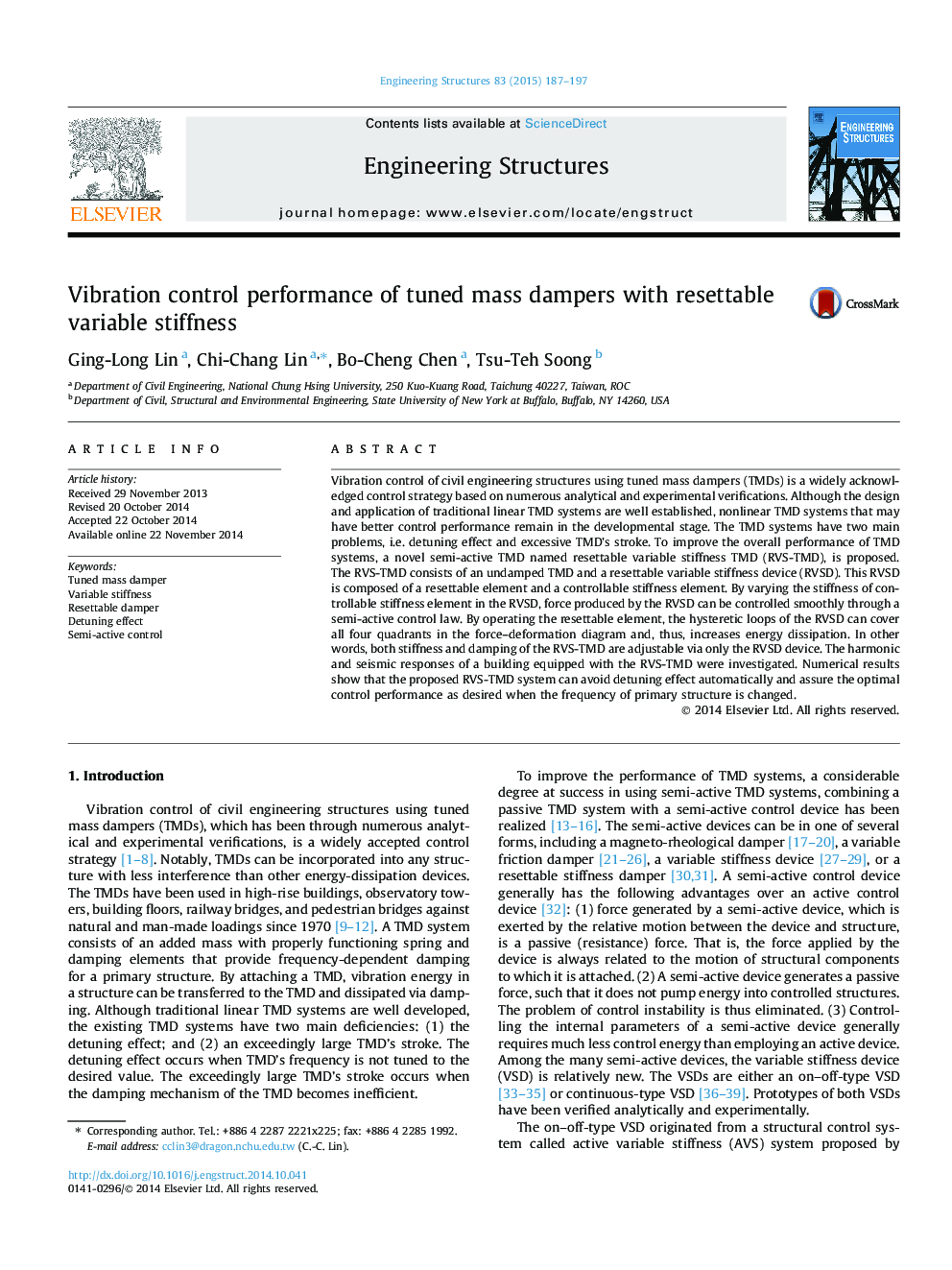| کد مقاله | کد نشریه | سال انتشار | مقاله انگلیسی | نسخه تمام متن |
|---|---|---|---|---|
| 266467 | 504362 | 2015 | 11 صفحه PDF | دانلود رایگان |
• A new type of TMD with resettable variable stiffness (RVS-TMD) is proposed.
• Both stiffness and damping of the RVS-TMD are adjustable.
• The vibration energy can be released via the actuation of the resettable device.
• The RVS-TMD mitigates detuning effect to assure optimal control performance.
Vibration control of civil engineering structures using tuned mass dampers (TMDs) is a widely acknowledged control strategy based on numerous analytical and experimental verifications. Although the design and application of traditional linear TMD systems are well established, nonlinear TMD systems that may have better control performance remain in the developmental stage. The TMD systems have two main problems, i.e. detuning effect and excessive TMD’s stroke. To improve the overall performance of TMD systems, a novel semi-active TMD named resettable variable stiffness TMD (RVS-TMD), is proposed. The RVS-TMD consists of an undamped TMD and a resettable variable stiffness device (RVSD). This RVSD is composed of a resettable element and a controllable stiffness element. By varying the stiffness of controllable stiffness element in the RVSD, force produced by the RVSD can be controlled smoothly through a semi-active control law. By operating the resettable element, the hysteretic loops of the RVSD can cover all four quadrants in the force–deformation diagram and, thus, increases energy dissipation. In other words, both stiffness and damping of the RVS-TMD are adjustable via only the RVSD device. The harmonic and seismic responses of a building equipped with the RVS-TMD were investigated. Numerical results show that the proposed RVS-TMD system can avoid detuning effect automatically and assure the optimal control performance as desired when the frequency of primary structure is changed.
Journal: Engineering Structures - Volume 83, 15 January 2015, Pages 187–197
